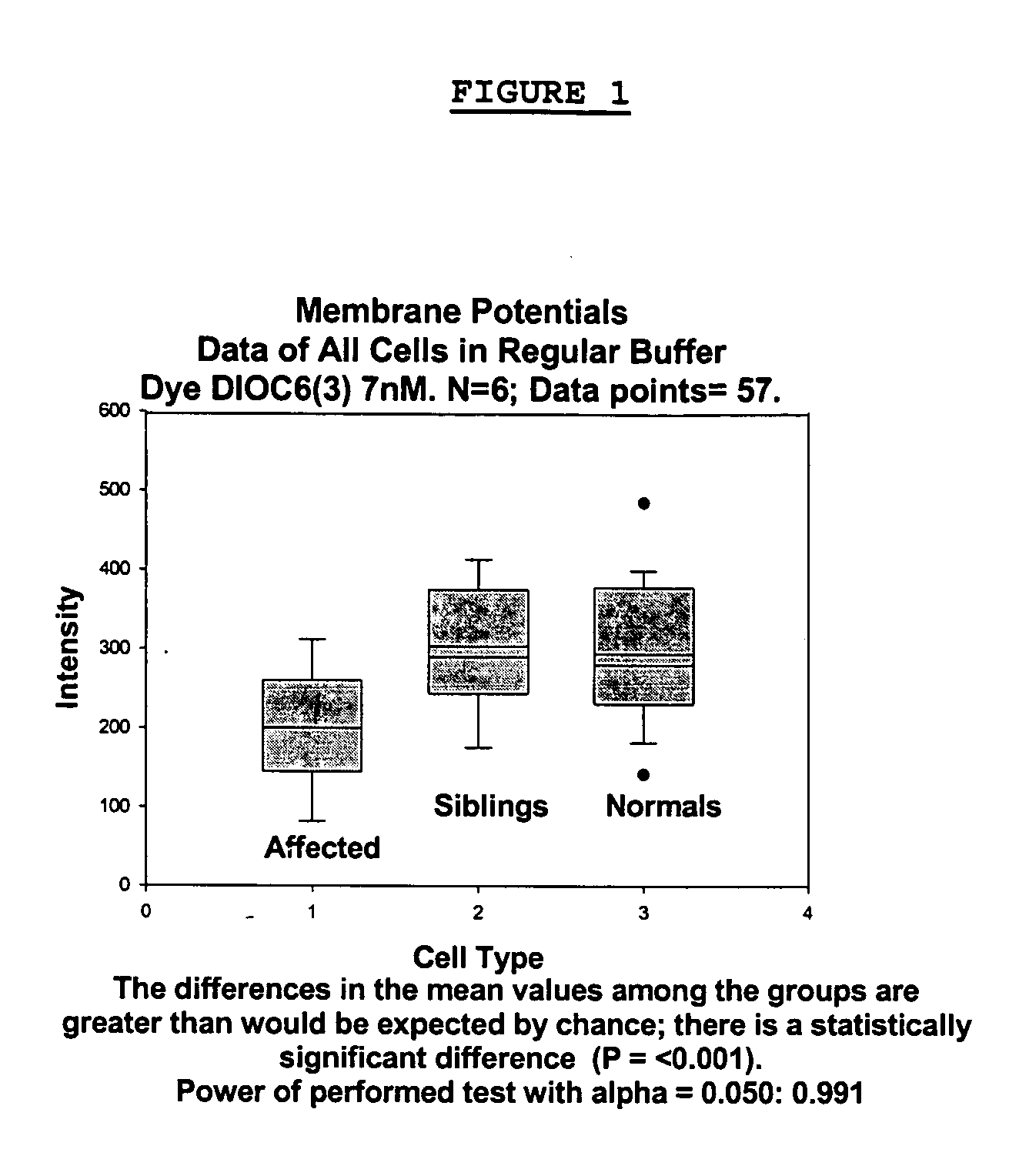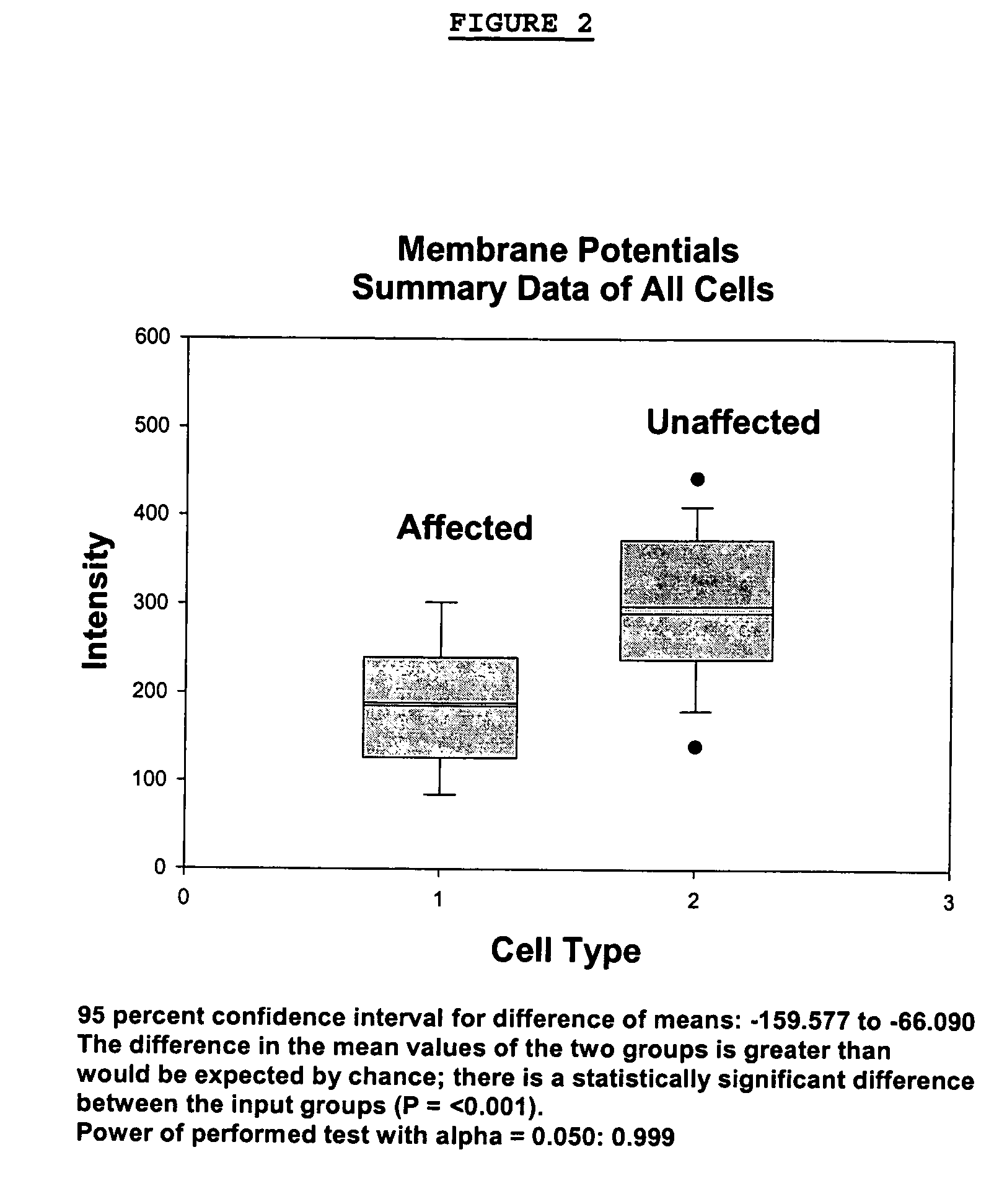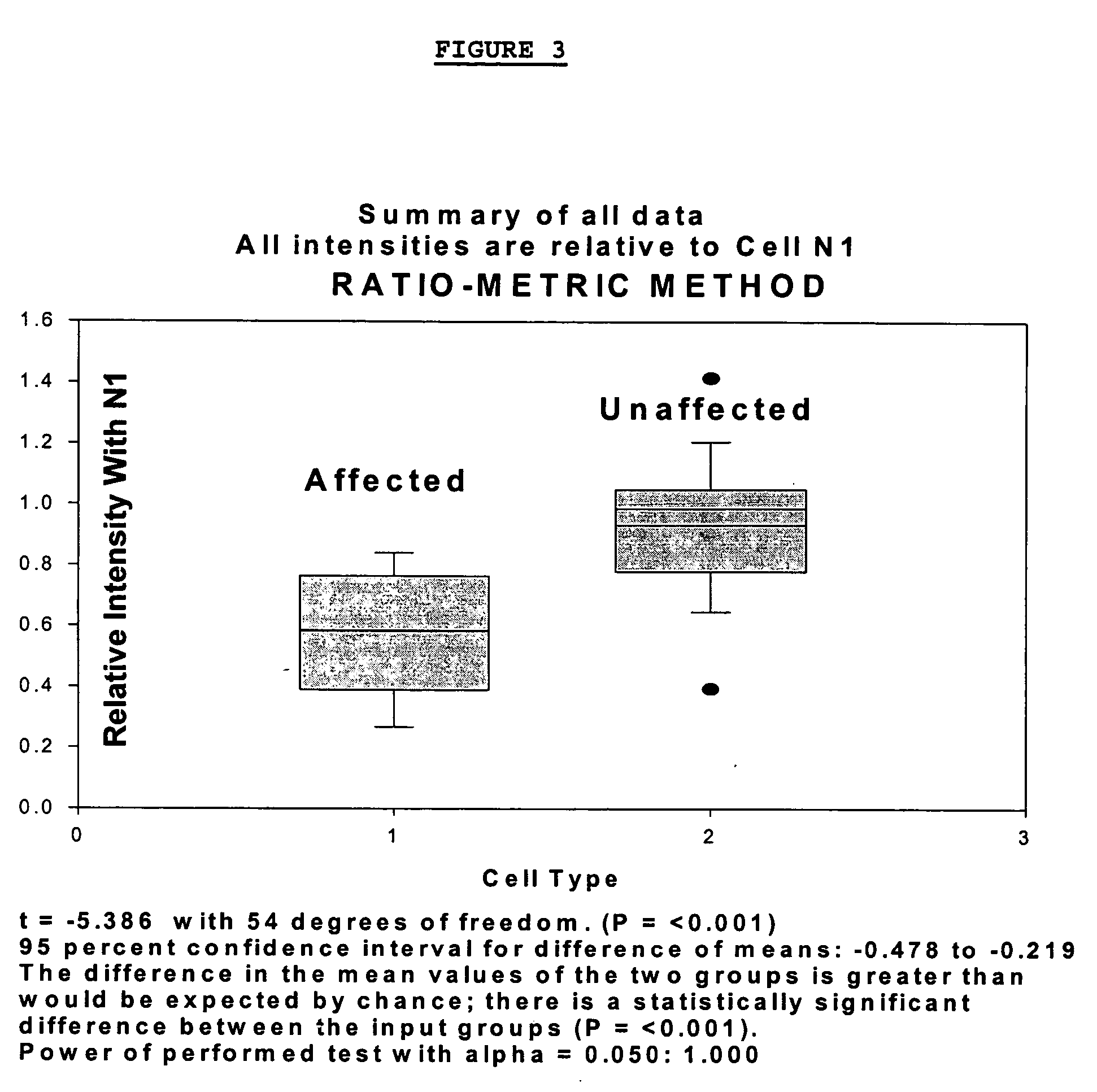Methods for diagnosing bipolar and unipolar disorder
a bipolar disorder and unipolar disorder technology, applied in the field of bipolar disorder diagnosis, can solve the problems of misdiagnosis of bipolar disorder, limiting the accuracy of clinical diagnosis, and facing the medical community
- Summary
- Abstract
- Description
- Claims
- Application Information
AI Technical Summary
Problems solved by technology
Method used
Image
Examples
example 1
Cell Cultures
[0146] Three groups of immortalized lymphoblast samples were obtained from the Human Genetic Mutant Cell Repository (Coriell Institute for Medical Research, Camden N.J.). The samples are shown in Table 4 below and included six from affected (bipolar) patients (A1 through A6), six from their siblings (S1 through S6), and six from unrelated normal control subjects matched by age and sex (N1 through N6).
TABLE 4NameCoriell NumberAgeSexA1GM0986926 yrMaleA2GM0597722 yrFemaleA3GM0599926 yrFemaleA4GM0591816 yrFemaleA5GM0600335 yrFemaleA6GM1105125 yrFemaleS1GM0593323 yrMaleS2GM0591428 yrFemaleS3GM0590150 yrMaleS4GM0921518 yrMaleS5GM0588828 yrFemaleS6GM0590155 yrFemaleN1GM0594525 yrMaleN2GM0616028 yrFemaleN3GM0540834 yrFemaleN4GM0686226 yrFemaleN5GM0605136 yrMaleN6GM0686136 yrMale
[0147] The cells were grown at 37° C. in RPMI 1640 culture medium (GIBCO, Life Technologies, Gaithersburg, Md., USA) with 15% fetal bovine serum and 1% penicillin.
example 2
Determination of Membrane Potential
[0148] The membrane potentials of the cells shown in Table 4 above (as well as in all other experiments, except where indicated) were measured using the following protocol. The cells cultured in the media described above were centrifuged at 210 g for 5 minutes at room temperature, then suspended in 3 ml of K+-containing stock buffer (5 mM KCl, 4 mM NaHCO3, 5 mM HEPES, 134 mM NaCl, 2.3 mM CaCl2, and 5 mM glucose). The cells were counted and the desired number of cells were again suspended in the K+-containing buffer. The membrane potentials were measured using 3,3′-dihexyloxacarbocyanine iodide DiOC6(3), a cell-permeant, voltage sensitive, green-fluorescent dye (Molecular Probes Inc. Eugene, Oreg. USA). The cells were preincubated for 30 minutes before measurements. The preincubated cell suspension was centrifuged at 210 g for 5 minutes and the cells were resuspended in the K+-containing buffer without the dye in the buffer.
[0149] A fluorescence s...
example 3
Membrane Potential In K+-free Buffer
[0155] Membrane potentials were also measured in K+-free buffer to enable comparison with membrane potentials in K+-containing buffer. As used herein, K+-free buffer contains all of the components of the K+-containing buffer, except potassium (4 mM NaHCO3, 5 mM HEPES, 134 mM NaCl, 2.3 mM CaCl2, and 5 mM glucose). Constant volumes of samples of each cell line were added to an equal volume of buffer containing an equal volume of dye. K+-free buffer as well as K+-containing buffer contained an equal volume of cells (and hence an equal number of cells from that culture sample) and an equal concentration of dye. Each variable was constant for each cell line in both buffers, so that the ratio of intensities was a true ratio-metric measurement.
[0156]FIG. 4 shows a comparison of membrane potentials in K+-free buffer with those in K+-containing (regular) buffer, as indicated by fluorescence intensity. 70 nM DiOC6(3) was added to the cells 30 minutes prio...
PUM
 Login to View More
Login to View More Abstract
Description
Claims
Application Information
 Login to View More
Login to View More - R&D
- Intellectual Property
- Life Sciences
- Materials
- Tech Scout
- Unparalleled Data Quality
- Higher Quality Content
- 60% Fewer Hallucinations
Browse by: Latest US Patents, China's latest patents, Technical Efficacy Thesaurus, Application Domain, Technology Topic, Popular Technical Reports.
© 2025 PatSnap. All rights reserved.Legal|Privacy policy|Modern Slavery Act Transparency Statement|Sitemap|About US| Contact US: help@patsnap.com



